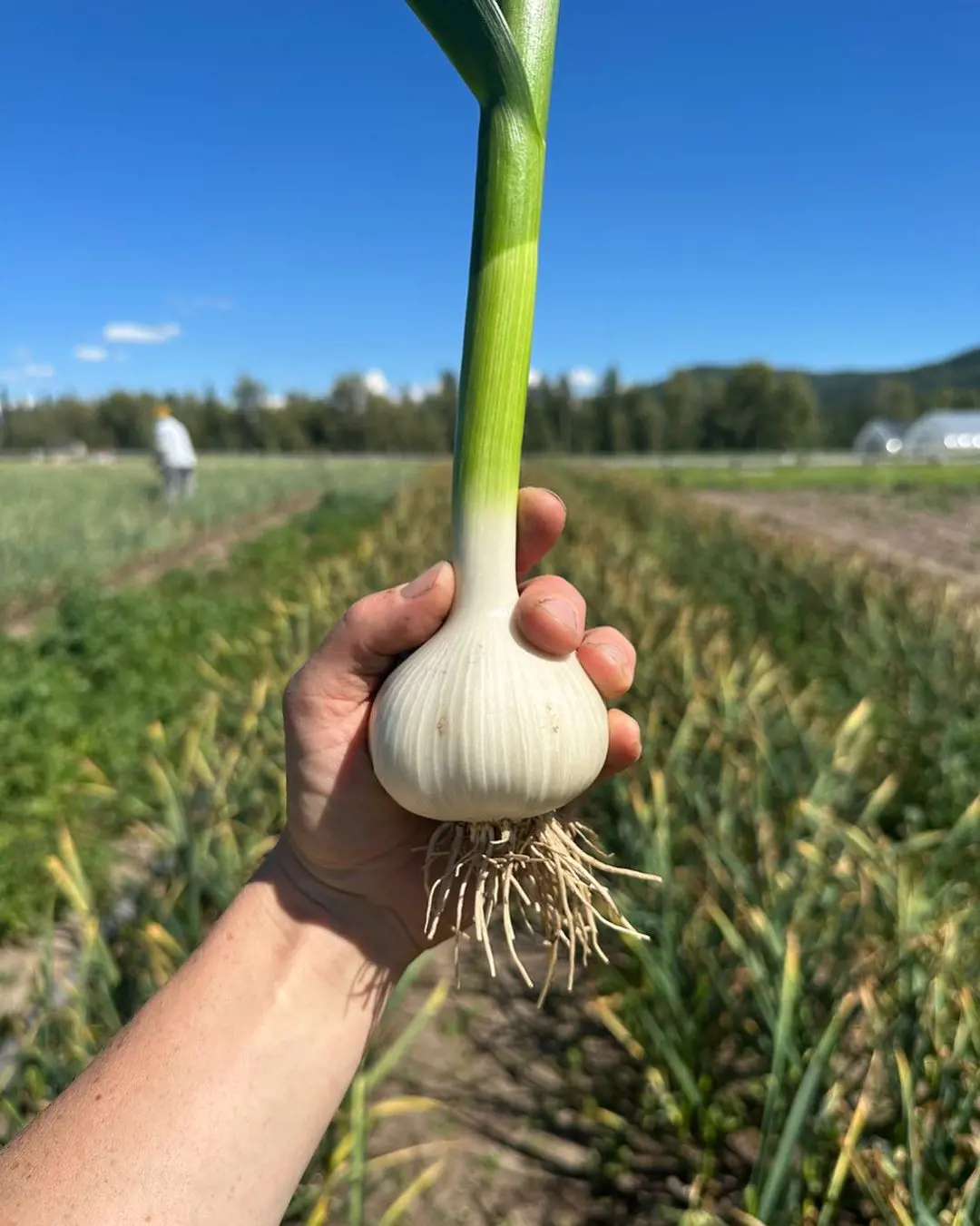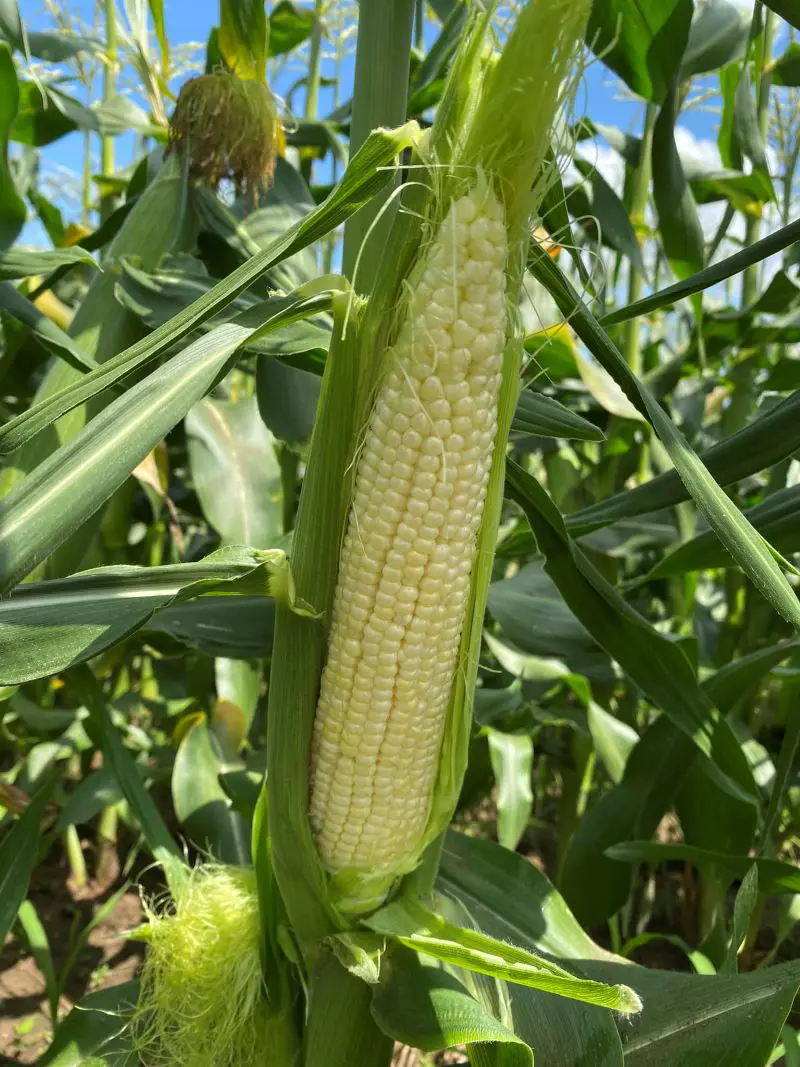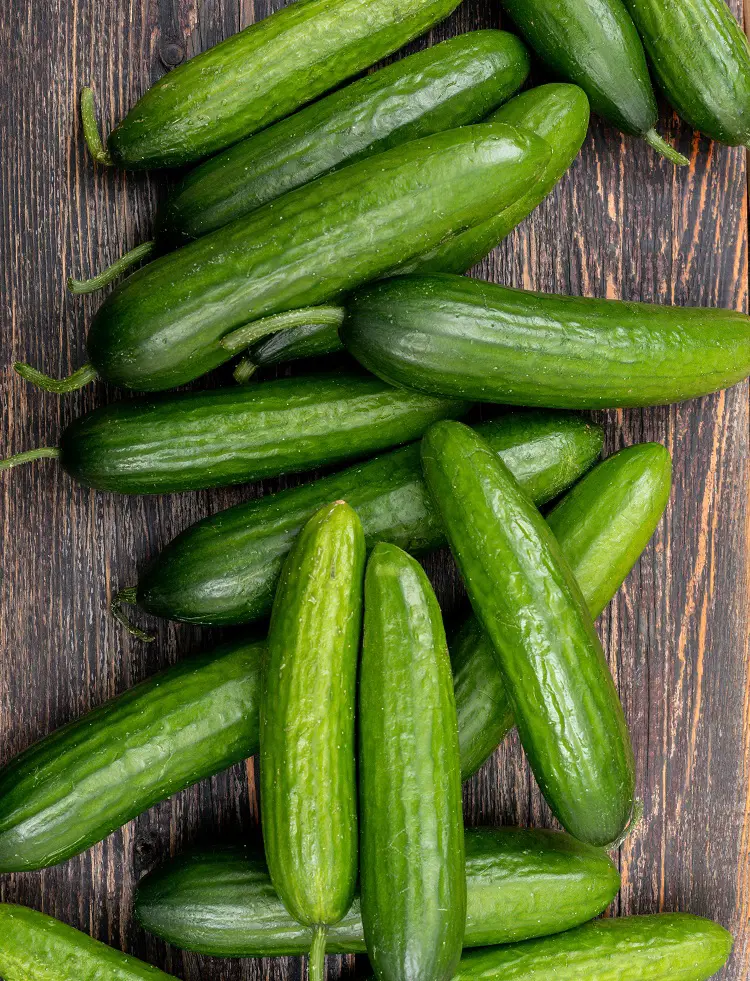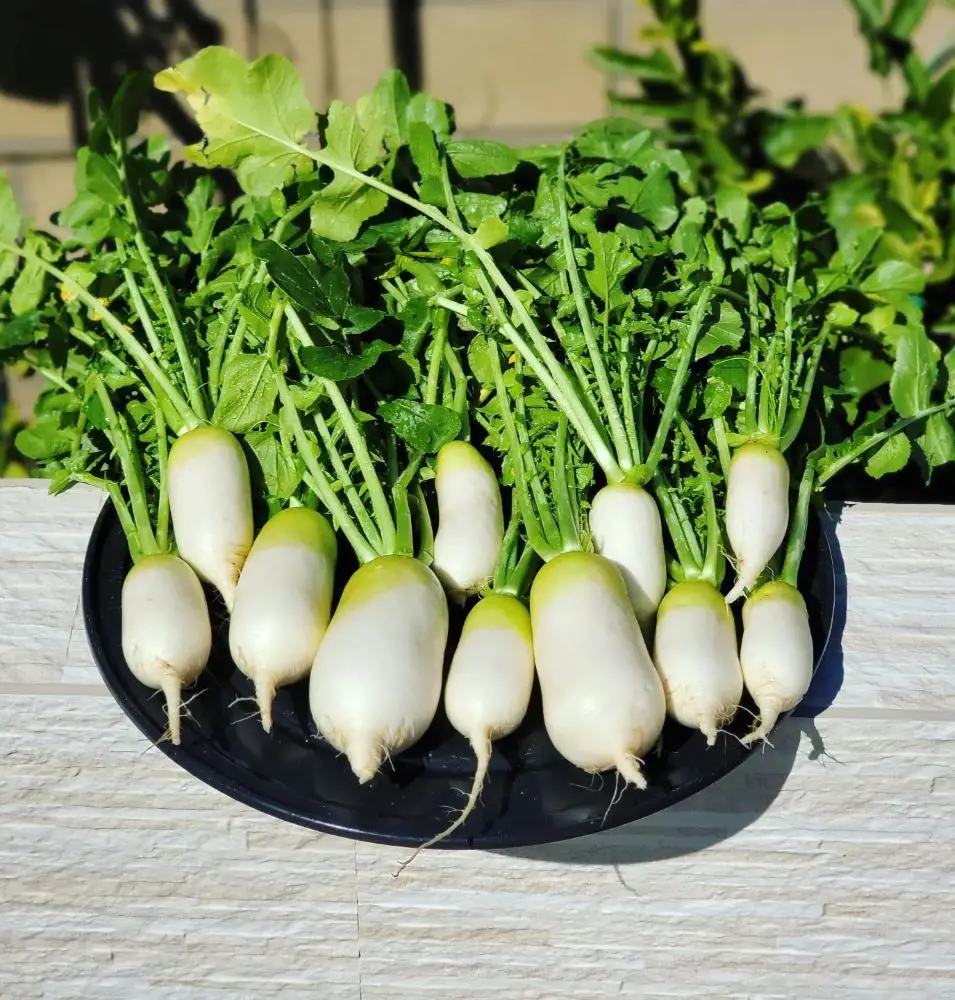How To Grow And Care For Cantaloupe
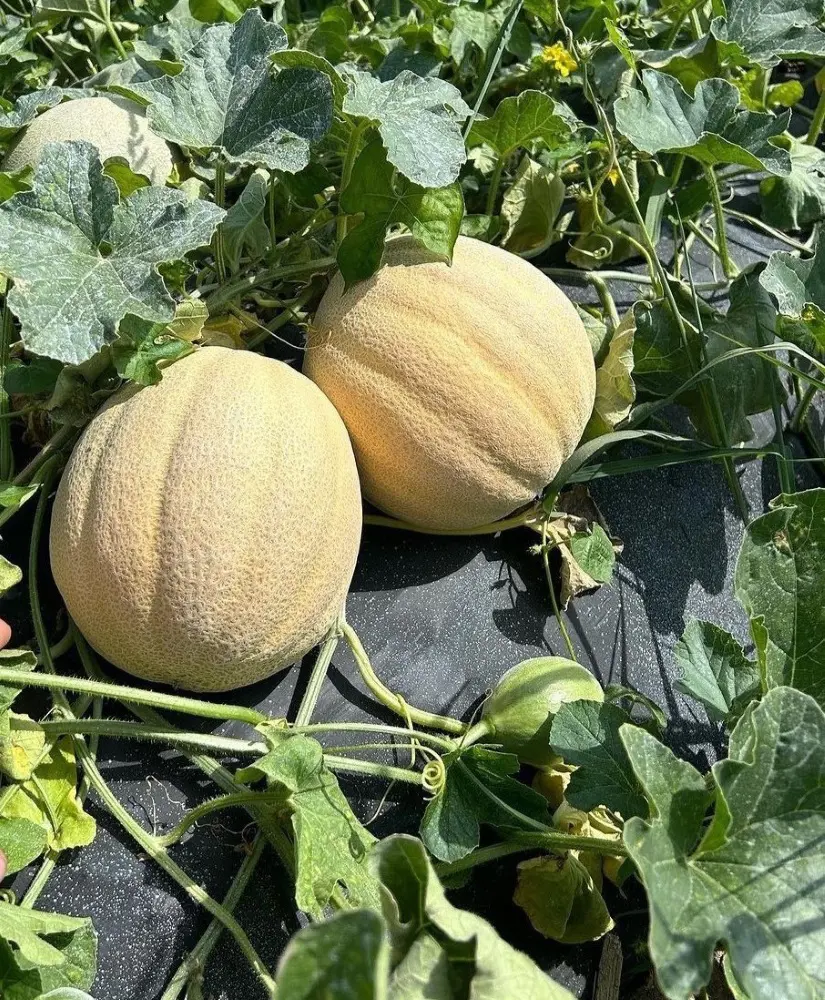
This post may contain affiliate links. If you make a purchase through links on our site, we may earn a commission.
As the warm sun bathes the fields, cantaloupe vines flourish with succulent orbs of delight. This quintessential summer fruit wins over taste buds with its sweet and juicy essence.
Cantaloupes are rich in vitamins A and C, as well as antioxidants, making them a nutritious addition to any diet. Growing these plants is a straightforward task as they require well-drained soil, plenty of sunlight, and regular watering to thrive. Also, don't forget to provide ample space and support for the vines.
Cantaloupe Plant Overview
| Scientific Name | Cucumis. melo var. reticulatus |
| Common Name | Cantaloupe, muskmelon |
| Family | Cucurbitaceae |
| Type | Fruit, annual |
| Size | 15–18 in. tall, 6 ft. wide |
| Sunlight Requirement | Full sun |
| Soil Type/pH | Loamy, sandy, well-drained/Acidic, neutral |
| Hardiness Zone | 5-11 (USDA) |
| Native Area | Asia, Africa |
What Is A Cantaloupe?
A cantaloupe is a type of melon (Cucumis melo) from the Cucurbitaceae family. It's a small, popular muskmelon with bumpy outer skin and usually orange insides, although there are variations with green flesh as well. The fruit has a round or oval shape with a heavily netted rind.
They are considered summer fruits, as they are typically harvested during the summer months when they reach maturity. The cantaloupe plant is a vine that typically sprawls along the ground, producing tendrils that help it climb and support itself as it grows.
How To Grow Cantaloupe
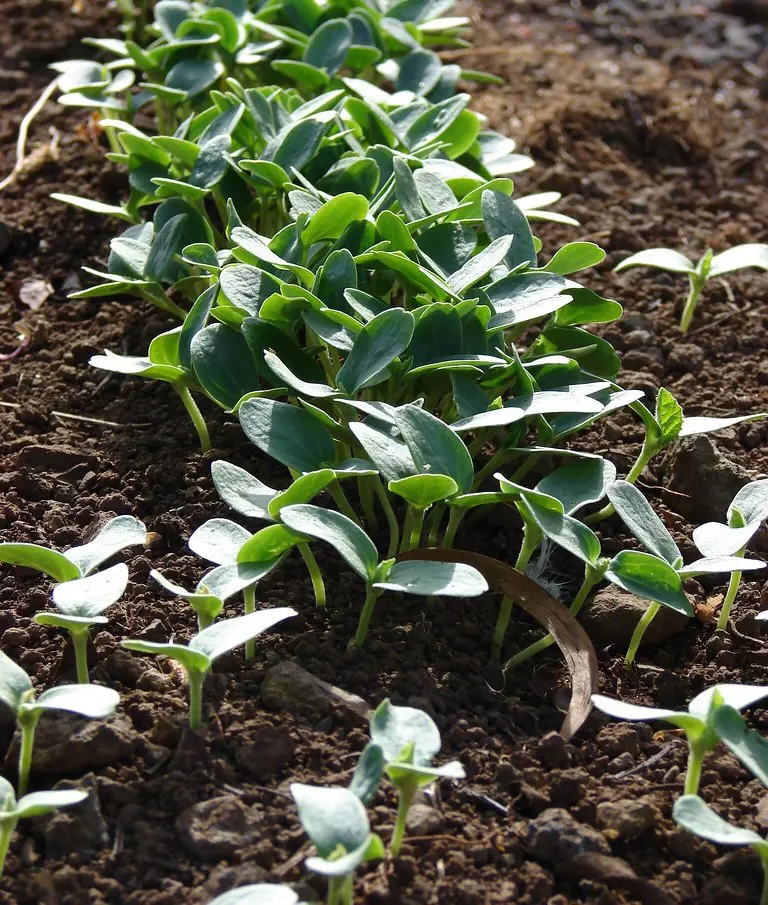
Cantaloupes are typically grown outdoors in gardens rather than indoors. They require plenty of sunlight, warm temperatures, and ample space for their sprawling vines to grow.
They are commonly cultivated in regions with a warm climate, such as California in the United States, where they can receive the necessary heat and sunlight to thrive.
When To Plant
The perfect time to grow cantaloupe is when the weather gets warmer in the spring. Cantaloupe loves warmth, so it's best not to plant it too early when it's still chilly outside. It's ideal to sow cantaloupe seeds outdoors, about 2 weeks after the last frost date when the soil has warmed up to about 65°F.
In warmer regions like Florida, planting can start as early as February or March. In cooler areas, you can start the seeds indoors roughly 3 weeks before the last frost date, then move them outside once the soil warms up to 65°F and nighttime temperatures are above 50°F.
Where To Plant
Cantaloupe planting is usually done directly on the ground rather than in pots. This allows their extensive root systems to spread out and access nutrients from the soil more effectively.
They thrive in sunny locations with well-drained soil, so the best place to grow them is in a sunny spot in your garden. Look for an area that receives full sunlight for most of the day, preferably with at least 6 to 8 hours of direct sunlight. Seeds are typically sown in hills or rows, with several seeds planted in each hill or spaced along the row.
How To Plant
After choosing a well-drained, sunny location in the garden, follow these steps to plant cantaloupe seeds:
- Loosen the soil to a depth of about 8–12 inches (20–30 cm) and incorporate organic matter like compost or aged manure to improve soil fertility and drainage.
- Plant the seeds about 1 inch (2.5 cm) deep, and space them 18–24 inches (45–60 cm) apart in rows or hills.
- Water the seeds immediately after planting and continue to water regularly, especially during dry periods.
- Apply a layer of organic mulch, such as straw or shredded leaves, around the base of the plants to help conserve moisture, suppress weeds, and maintain an even soil temperature.
- As the plants grow, provide support for the vines with trellises or stakes to keep the fruits off the ground.
- Additionally, consider pruning the vines to remove excess foliage and encourage better air circulation and fruit development.
Growing Cantaloupe In Pot
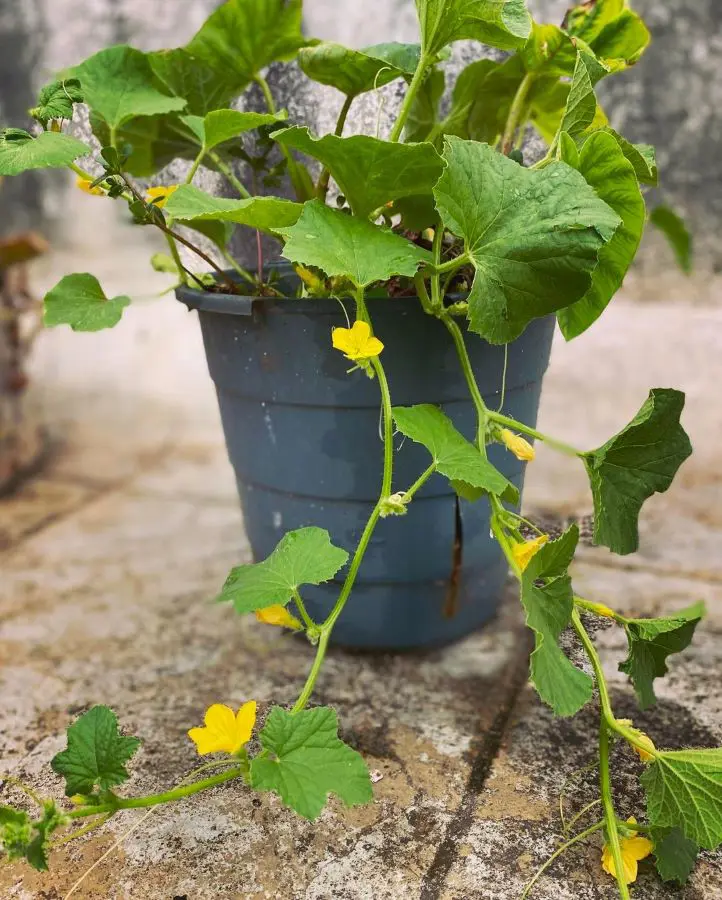
- Container Selection: Choose a large container that is at least 18 to 24 inches deep and wide, with adequate drainage holes to prevent waterlogging.
- Care Requirements: Similar to outdoor cultivation, indoor cantaloupe plants need proper watering, sunlight, soil, and temperature conditions.
- Watering: Monitor soil moisture levels closely as containers can dry out faster than garden soil. Keep the soil evenly moist but not waterlogged, and water the plants regularly.
- Fertilization: Container-grown plants may need more frequent fertilization due to limited soil volume and nutrient availability.
- Variety Selection: Opt for compact or bush varieties well-suited to container gardening, such as "Sugar Cube," "Minnesota Midget," and "Hales Best Jumbo."
Cantaloupe Plant Care
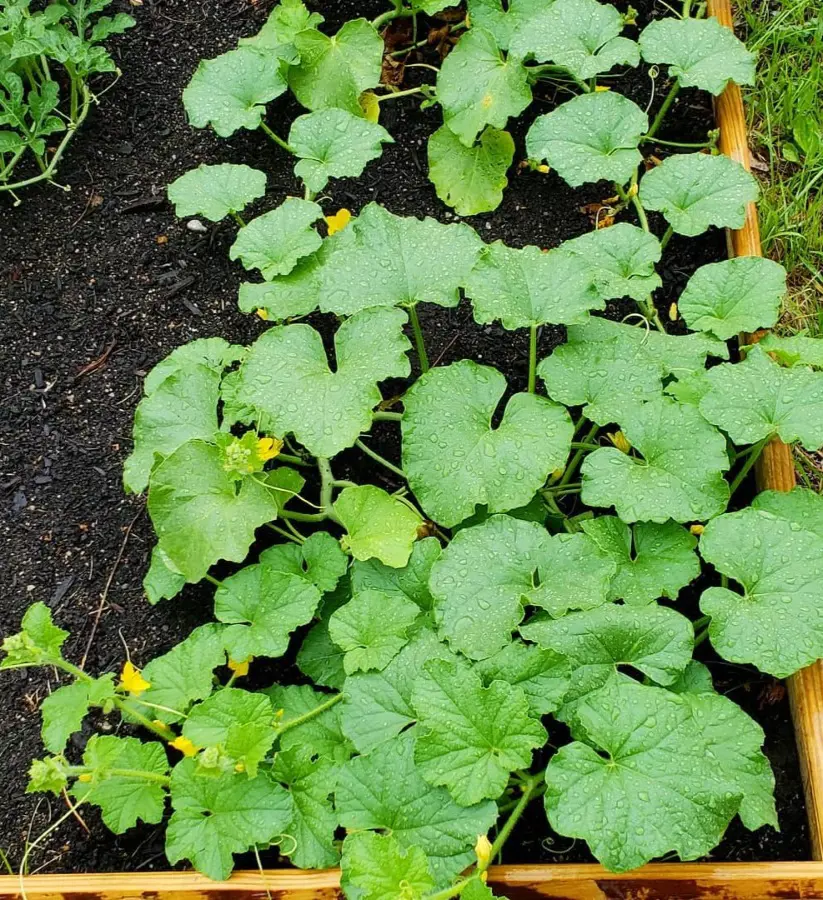
Cantaloupe plants are relatively hardy and can tolerate some variations in weather conditions. However, they still require attentive care, especially during periods of extreme heat or drought. One of the most important requirements for caring for cantaloupe plants is consistent watering.
Here is the summarized care requirement for the cantaloupe plant:
Water
Being a summer fruit, cantaloupe has higher water requirements compared to some other types of plants. The warm temperatures and increased sunlight during the summer months can cause the soil to dry out more quickly, leading to increased water loss through evaporation from the soil and transpiration from the plant.
Their shallow root systems require consistent moisture to support their growth and fruit development. Insufficient water can lead to wilting, poor fruit set, and smaller fruits. On the other hand, overwatering can cause root rot and other problems. To water effectively, aim to keep the soil consistently moist but not waterlogged.
Sunlight
Cantaloupes thrive in full sunlight, so it's essential to plant them in a sunny spot where they'll receive at least 6 to 8 hours of direct sunlight per day.
Sunlight is crucial for photosynthesis, the process by which plants convert light energy into sugars and carbohydrates, which fuels growth and fruit production in cantaloupes.
Soil
Cantaloupes prefer a well-drained, fertile type of soil with a pH between 6.0 and 6.8. Incorporating organic matter, such as compost or aged manure, into the soil before planting can help improve soil structure, fertility, and moisture retention.
Proper soil preparation ensures that cantaloupe plants have access to essential nutrients and adequate drainage for healthy root development.
Temperature
Cantaloupes thrive in warm temperatures and are sensitive to frost. They require temperatures consistently above 70°F (21°C) for optimal growth.
Planting them after the danger of frost has passed ensures that they won't be damaged by cold temperatures. During the growing season, maintaining warm temperatures promotes healthy vine growth, flower development, and fruit set.
Humidity
Cantaloupes prefer moderate humidity levels, but they can tolerate a range of conditions. High humidity combined with warm temperatures can create favorable conditions for fungal diseases like powdery mildew.
To reduce humidity levels around cantaloupe plants, provide adequate spacing between plants to promote air circulation and avoid overhead watering, which can increase humidity levels.
Fertilization
Cantaloupe plants benefit from regular fertilization to support their vigorous growth and fruit production. Before planting, incorporate a balanced fertilizer into the soil according to package instructions.
Additionally, side-dress the plants with a nitrogen-rich fertilizer once they start to vine and again when the first fruits appear. Avoid over-fertilizing, as excessive nitrogen can promote lush foliage growth at the expense of fruit production.
Mulching
While growing a cantaloupe, apply a layer of organic mulch around the base of the plant. This helps conserve soil moisture, suppress weeds, and regulate soil temperature.
Mulch also helps prevent soil compaction, which can impede root growth and nutrient uptake. Organic mulches like straw, shredded leaves, or grass clippings are ideal for cantaloupes.
Support
These vining crops sprawl along the ground as they grow. Providing support for the vines can help keep the fruits off the ground, reduce the risk of rot, and save space in the garden. Trellises, cages, or sturdy stakes can be used to support cantaloupe vines.
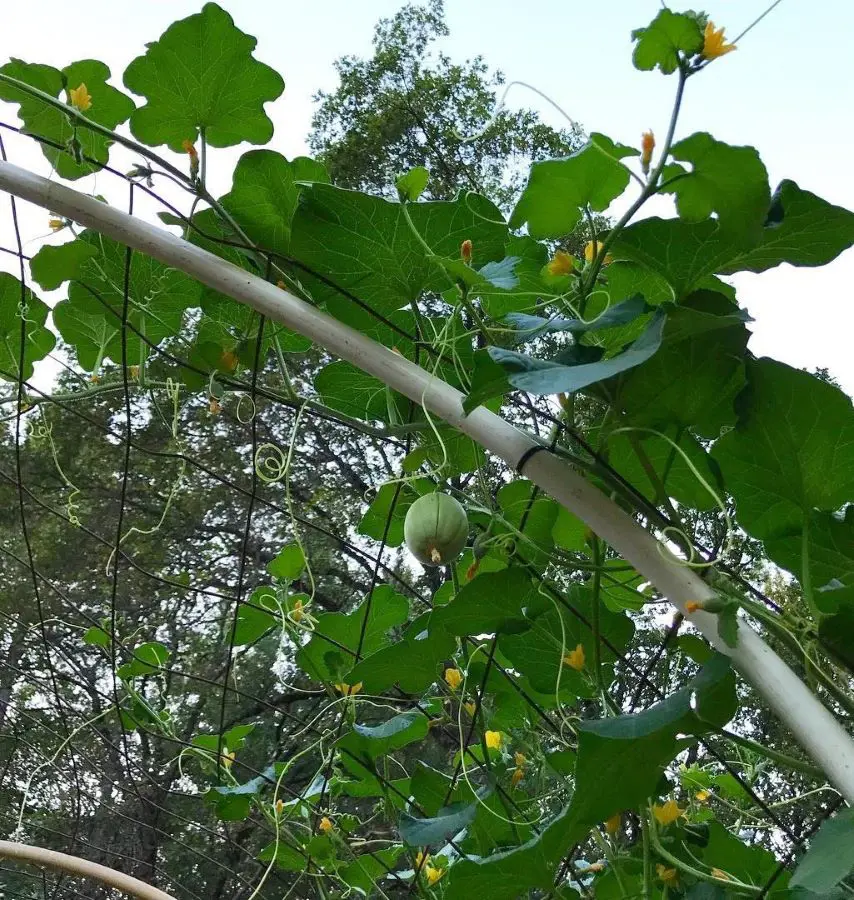
Pollination
Pollination is a crucial aspect of growing cantaloupe plants because it's necessary for fruit set and development. Cantaloupe plants produce separate male and female flowers on the same vine. The male flowers typically appear first and produce pollen, while the female flowers develop later and have a miniature fruit attached to the base, known as the ovary.
Pollination of cantaloupe flowers is primarily carried out by bees and other pollinating insects. It is essential to attract pollinators to the garden by providing a diverse range of flowering plants and avoiding the use of pesticides that are harmful to bees.
Repotting Cantaloupe
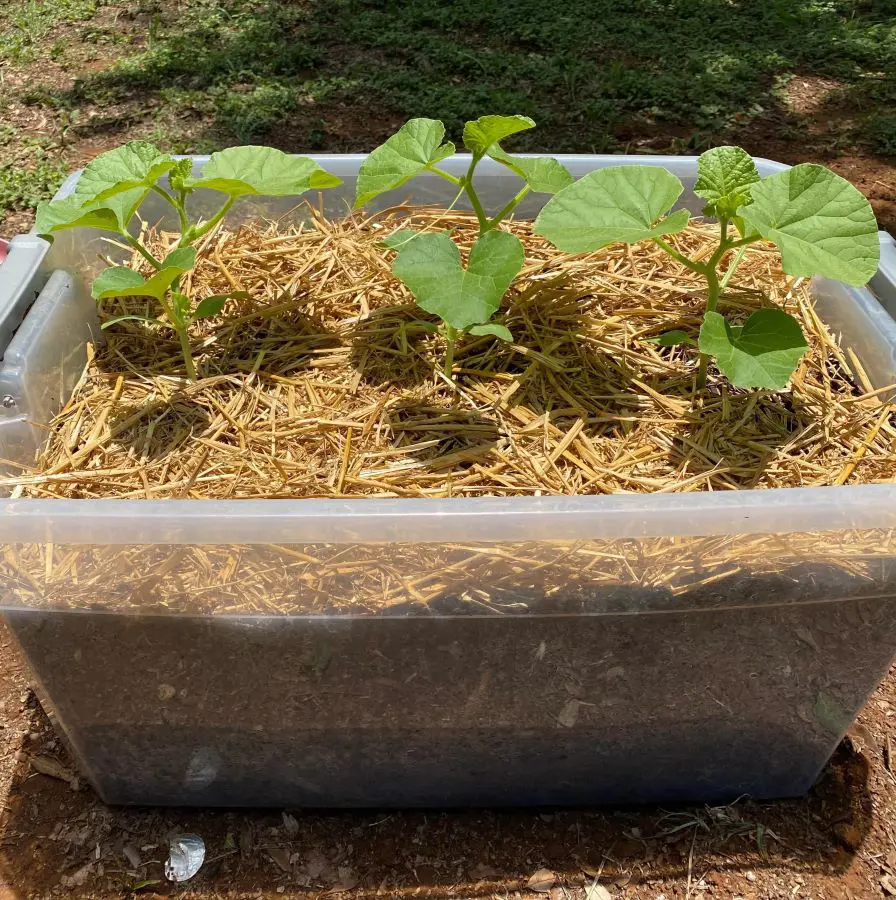
When cantaloupes are grown in pots, they may eventually outgrow their containers and require repotting to ensure continued healthy growth and fruit production. These plants have extensive root systems, and when they become root-bound, their growth and productivity can be hindered.
Cantaloupe may need repotting when the roots grow out of the drainage holes at the bottom of the pot, the growth rate slows down, or they wilt despite adequate watering.
When repotting cantaloupe plants, it's important to carefully transplant them into a larger container to accommodate their growing root system. Choose a pot that is at least 2–3 inches larger in diameter than the current container and has drainage holes at the bottom.
To repot a cantaloupe plant, follow these steps:
- Fill the new container with fresh potting soil, leaving enough space at the top for the plant's root ball.
- Gently tap or squeeze the sides of the pot to loosen the soil, then carefully lift the plant out by grasping the base of the stem or the top of the root ball.
- If the roots are tightly bound, gently tease them apart with your fingers to encourage outward growth.
- Place the cantaloupe plant in the center of the new pot, ensuring that the top of the root ball is level with the top of the soil.
- After repotting, water the cantaloupe plant thoroughly to settle the soil and hydrate the roots.
Pruning
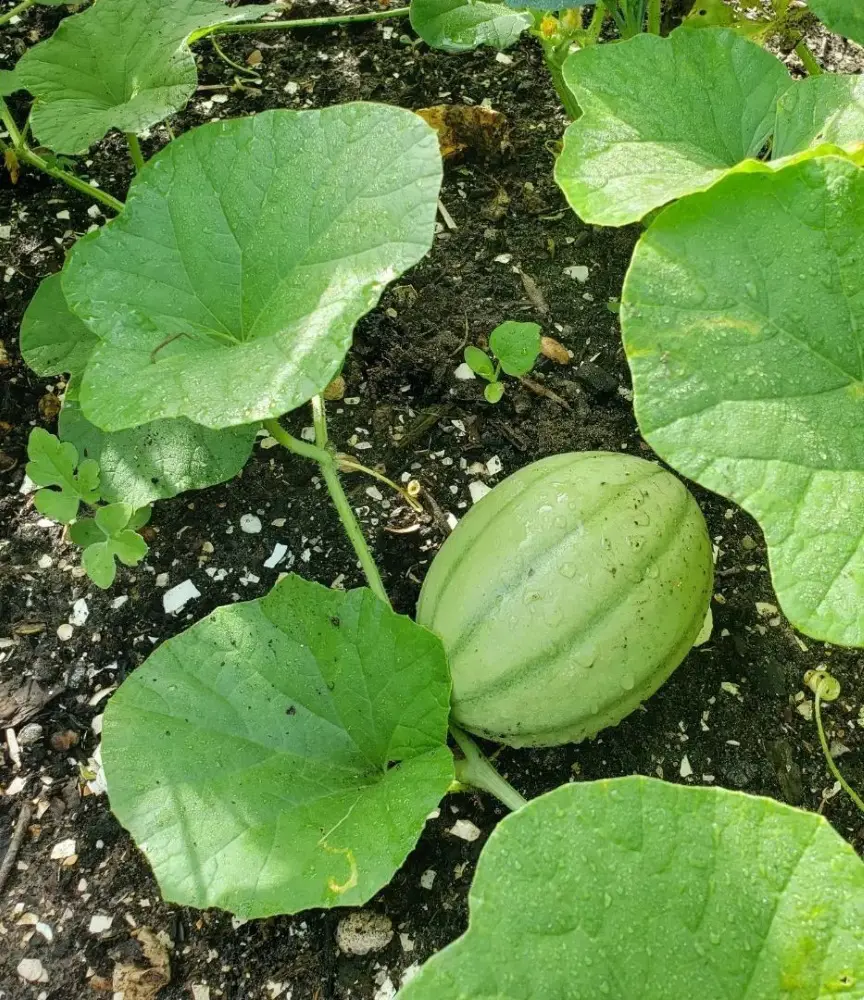
Pruning can be an important part of the care routine for cantaloupe plants, whether they are grown in the ground or in containers. These plants can grow quite large, with vines reaching lengths of 6 to 10 feet or more. In some cases, their vigorous growth can lead to overcrowding and competition for resources, especially in smaller garden spaces or containers.
Here are some tips for pruning Cantaloupe plants:
- Timing: Prune cantaloupe plants throughout the growing season as needed, starting when the vines begin to develop lateral shoots. Avoid heavy pruning during flowering and fruit development, as this can stress the plant and reduce yields.
- Tools: Use clean, sharp pruning shears or scissors to make clean cuts without tearing or damaging the plant. Disinfect the tools between cuts if pruning diseased plants to prevent the spread of pathogens.
- Technique: When pruning cantaloupe plants, focus on removing excess foliage, lateral shoots, and any dead or diseased growth. Cut stems just above a leaf node or lateral shoot to encourage branching and new growth. Remove any suckers that develop at the base of the plant to prevent overcrowding.
Propagating Cantaloupe
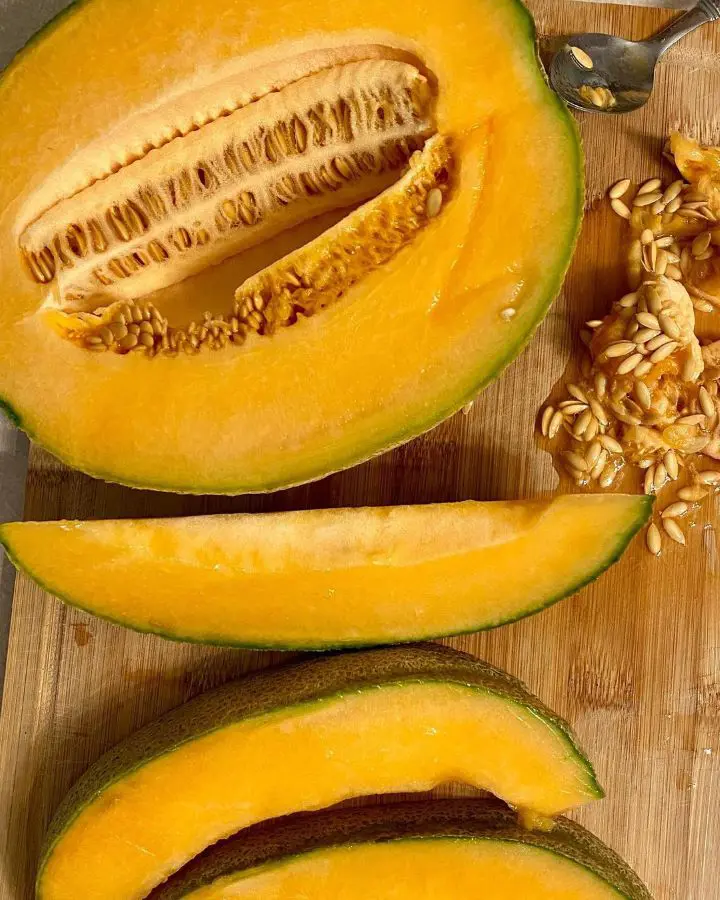
Cantaloupe is typically propagated through collected seeds from harvested fruits. When harvesting cantaloupes for consumption, the seeds can be saved for planting in the next growing season. However, it's important to note that cantaloupe plants are insect-pollinated, so there is a possibility of cross-pollination if different varieties of melons are grown nearby.
To collect seeds from cantaloupe fruits for propagation, follow these steps:
- Choose fully ripened cantaloupes with firm, evenly colored rinds and a strong, sweet aroma. Avoid fruits that are overripe or damaged.
- Cut the cantaloupe in half and scoop out the seeds and surrounding pulp using a spoon. Place the seeds and pulp in a bowl or strainer.
- Rinse the seeds under cool water to remove any remaining pulp.
- Use your fingers to separate the seeds from the pulp, discarding any seeds that are damaged or discolored.
- Spread the cleaned seeds in a single layer on a paper towel or mesh screen to air dry.
- Allow the seeds to dry completely for about 1-2 weeks, or until they are thoroughly dry and no longer sticky.
- Once dry, store the seeds in a cool, dry place in an airtight container, such as a labeled envelope or glass jar
How To Harvest Cantaloupe
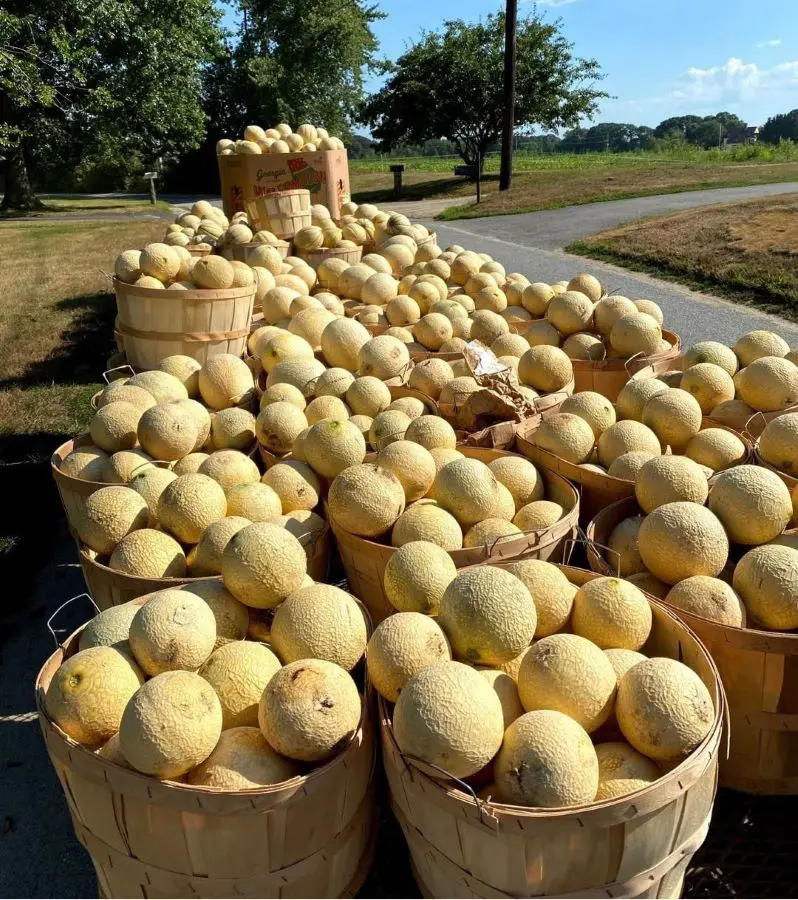
Different varieties of cantaloupe may have slightly different times for harvest. But, in general, there are some common signs to look for to determine when they are ready to be harvested.
- Ripe color and aroma: A ripe cantaloupe will have a distinct color and aroma. The rind should change from green to beige or yellowish, and the surface netting should become more pronounced. Additionally, the fruit should give off a sweet, musky aroma near the stem end.
- Slip from the vine: When gently pressed or twisted, a ripe cantaloupe will easily detach or "slip" from the vine. If the fruit requires significant force to separate from the vine, it may not be fully ripe.
- Firmness and texture: A ripe cantaloupe should feel firm but yield slightly to gentle pressure. The skin should have a slight give, indicating that the fruit is juicy and flavorful. Avoid fruits that feel too hard or too soft, as they may be underripe or overripe, respectively.
Harvesting Process
It takes around 3 to 4 months for cantaloupes to grow before they're ready to be picked. They're harvested by hand when the vine naturally slips from the melon, which happens during the three-quarter to full slip stage. Here is how to harvest them:
- Inspect the cantaloupe patch and identify fruits that exhibit the signs of ripeness mentioned above.
- Use a clean, sharp knife or shears to cut the stem of the cantaloupe from the vine, leaving a short stem attached to the fruit.
- Cut the stem close to the fruit, taking care not to damage the vine or neighboring fruits.
- Handle harvested cantaloupes carefully to avoid bruising or damaging the fruit.
- Place them gently in a basket or container, taking care not to stack them on top of each other.
After harvesting cantaloupes, they should be processed promptly to preserve their freshness and flavor. Here are some tips for processing harvested cantaloupes:
- Clean and Rinse: Rinse the harvested cantaloupes under cool, running water to remove any dirt or debris from the surface of the fruit.
- Dry: Pat the cantaloupes dry with a clean towel or allow them to air dry before storing or consuming.
- Storage: Store harvested cantaloupes in a cool, dry place away from direct sunlight. They can be stored at room temperature for a few days or refrigerated for a longer shelf life.
- Enjoy: Cantaloupes are best enjoyed fresh, but they can also be used in a variety of recipes, including salads, smoothies, desserts, and savory dishes. Experiment with different ways to enjoy the delicious flavor of freshly harvested cantaloupes.
Cantaloupe Types

Cantaloupe belongs to the Cucurbitaceae family, which includes other popular fruits and vegetables such as cucumbers, squash, and pumpkins. There are many different varieties of cantaloupe, each with its own unique characteristics in terms of flavor, size, and appearance.
The American cantaloupe is often referred to as a "reticulated muskmelon," while the true cantaloupe has ribbed pale green skin and looks different from the American variety.
Here are some of the popular varieties available to home gardeners and commercial growers:
- Hales Best Jumbo: Known for its large size and sweet, juicy flesh, Hales Best Jumbo is a classic cantaloupe variety with a well-rounded flavor. It has a heavily netted rind and deep orange flesh, making it a favorite among home gardeners and market growers alike.
- Ambrosia: Ambrosia cantaloupes are prized for their exceptionally sweet, aromatic flavor and smooth, pale green rind. They have a fine-textured, orange flesh that melts in the mouth, earning them their name, which means "food of the gods."
- Sugar Cube: Sugar Cube cantaloupes are small, round melons with a high sugar content and intense flavor. They have dense, orange flesh and a thin, smooth rind with minimal netting. Sugar cube melons are perfect for snacking or adding to fruit salads.
- Minnesota Midget: As the name suggests, Minnesota Midget cantaloupes are compact, bushy plants that produce small, sweet melons. They are well-suited for container gardening or small spaces and have a high yield of flavorful fruits with dense, orange flesh.
Difference Between Cantaloupe and Muskmelon
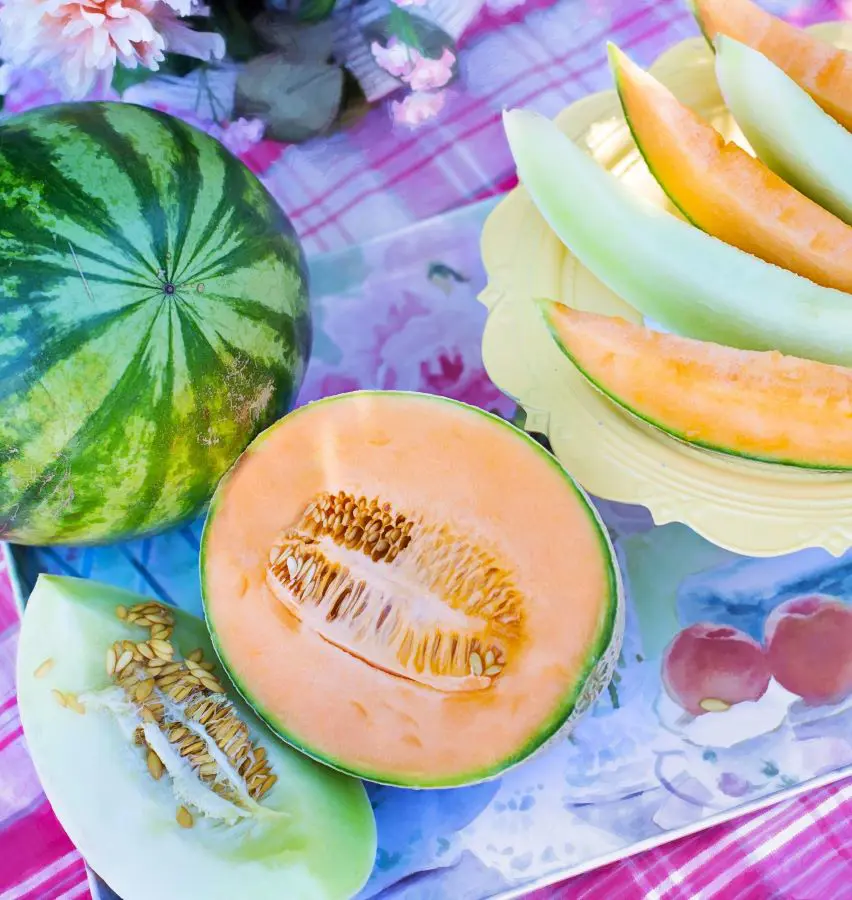
Cantaloupe and muskmelon are often used interchangeably, leading to confusion about whether they are the same fruit. While they are closely related and belong to the same species, Cucumis melo, there are some differences between them.
Cantaloupe is a specific type of muskmelon, characterized by its heavily netted rind and sweet, orange flesh. It is the most commonly grown and consumed variety of muskmelon in many regions. Muskmelon, on the other hand, is a broader term that encompasses various cultivars of Cucumis melo, including cantaloupe, as well as other types such as honeydew, casaba, and Persian melons.
Common Pests and Plant Diseases
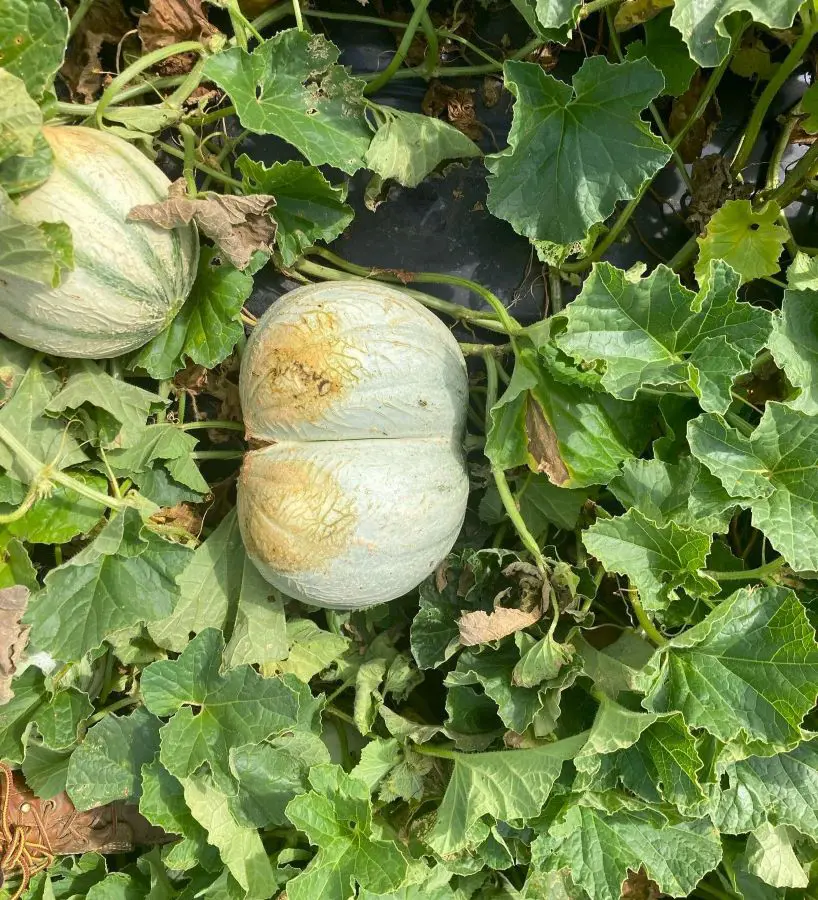
Cantaloupe plants can be harmed by various pests and diseases that affect their growth and fruit production. Here's a look at some common pests and diseases found in cantaloupe plants, along with how they happen and ways to stop them:
Common Pests
Pests come to cantaloupe plants for food and a place to live, which makes the plant weak. Here are some of them:
- Aphids: These tiny bugs suck sap from plants, making leaves turn yellow and misshapen. Treat them with neem oil or natural bug killers.
- Squash Vine Borer Moths: Their larvae bore into stems, causing plants to wilt and die. Remove the affected stems or use covers to keep them away.
- Cucumber beetles: They spread a disease called bacterial wilt. Control them early in the season to stop diseases from spreading.
Common Diseases
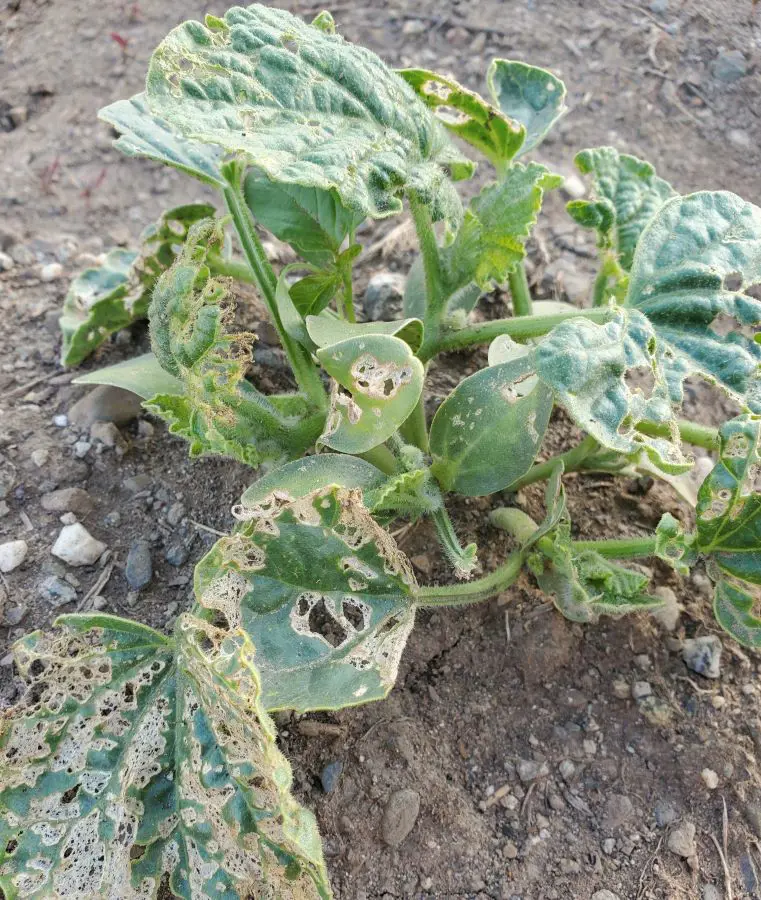
The main cause of cantaloupe plant disease is fungi and bacteria in warm, damp conditions that get into plants through cuts or other openings. Here are some of them:
- Powdery Mildew: This fungal disease creates a white powdery coating on leaves and stems. Plant in places with good airflow and sunlight to prevent it. Besides that, follow this guide to control and prevent powdery mildew.
- Fusarium Wilt: It's a fungal disease in the soil that hurts roots and the plant's system for transporting water. Change where you plant crops, use types of cantaloupe that resist the disease, and keep things clean.
- Anthracnose: Another fungal disease, it makes spots on fruit and leaves. Cut off infected parts, get rid of them, and use fungicides before there's a problem.
Preventive Measures
- Plant cantaloupes in soil that drains well, give them enough space and grow different crops in different places to lower the chances of diseases.
- Regularly check plants for signs of bugs or diseases so you can catch problems early.
- Quickly remove and get rid of parts of plants that are infected to stop diseases from spreading.
- Apply them before there's a problem or when there are a lot of bugs or diseases around.
Recent posts
How To Grow
How To Grow
How To Grow Garlic
A bulbous member of the onion family, garlic is prized for both its potent flavor and a variety of therapeutic applications. Due to its relative ease of cultivation, it is a favorite among home gardeners and a pioneer in kitchens worldwide. Garlic ma...
How To Grow
How To Plant and Grow Orchids
Orchids are one of the prettiest and most interesting flowers out there, with over 30,000 types and 200,000 hybrids. They are one of the biggest families of plants and can grow indoors or outdoors. However, growing and taking care of orchids is not e...
How To Grow
How To Plant, Grow And Harvest Corn All By Yourself
Growing your popcorn or sweet corn at home garden can seem like an interesting idea. However, it requires a large amount of space to grow as it is a tall plant that needs plenty of room to spread out. But, if you want to enjoy freshly popped po...
How To Grow
How To Plant, Grow And Care Cucumbers
Growing cucumbers is like going on a fun journey where you get to plant and pick your very own crunchy veggies. It's not just about having tasty cucumbers, it's also about the joy of seeing your plants grow. Whether you have a big garden or a small b...
How To Grow
How To Plant, Grow And Care Radishes In Your Garden
Growing radishes in your garden is a fantastic way to enjoy crisp and peppery veggies that you've nurtured from seed to plate. It's a straightforward process that anyone can try, even if you're new to gardening. In the following 12 steps, we'll guide...
How To Grow
How to Plant, Grow And Care For Spinach?
Growing leafy greens in your backyard garden is both healthy and fun. Spinach can be the best leafy green to start with as it is relatively easy to grow from scratch and can be harvested in about a month from planting. It thrives in spring or fall in...
